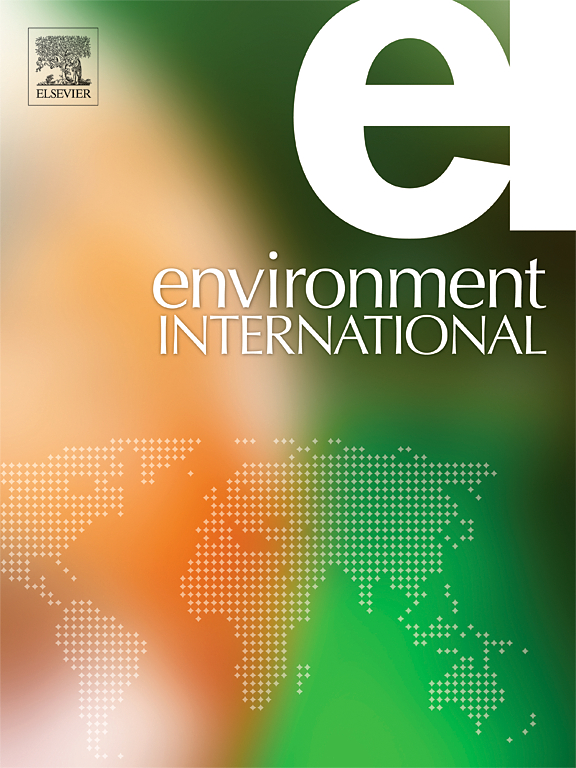Triphenyl phosphate induces lipid metabolism disorder and promotes obesity through PI3K/AKT signaling pathway
IF 10.3
1区 环境科学与生态学
Q1 ENVIRONMENTAL SCIENCES
引用次数: 0
Abstract
Triphenyl phosphate (TPHP) is a widely used organic phosphate flame retardant that has been reported as a potential environmental obesogen. However, the potential impact and mechanism of action of TPHP on adipose tissue are still unclear. This study investigates the potential impact of TPHP on lipid metabolism disorders through in vivo and in vitro experiments. Male and female BALB/c mice were exposed to TPHP (0, 1, 10, and 150 mg/kg/day) for 60 days, and 3 T3-L1 preadipocytes were treated with concentrations of TPHP (0, 0.1, 1, 10 μM) during differentiation. The results showed that exposure to TPHP could cause gender specific dyslipidemia, with male mice exhibiting dose-dependent increases in inguinal adipose tissue coefficient, adipocyte hypertrophy, and upregulation of adipose differentiation and adipogenesis-related genes. In contrast, female mice did not show significant changes in tissue morphology. This suggested that TPHP might promote the potential occurrence of adiposity by disrupting the lipid metabolism homeostasis of male adipose tissue. During the differentiation and maturation process of 3 T3-L1 preadipocytes, exposure to TPHP led to increased lipid accumulation and disrupted lipid homeostasis by simultaneous activation adipogenesis and lipolysis. Multiple omics data showed that the activation of the peroxisome proliferator-activated receptor γ (PPARγ) signaling pathway and fatty acid metabolism was the core mechanism of TPHP induced metabolic dysfunction. Further research showed that TPHP activated the PI3K/AKT pathway, and PI3K inhibitor (LY294002) could rescue TPHP induced lipid droplet formation and normalize the expression of adipogenic markers. These findings confirm that TPHP is a potential environmental obesogen that can disrupt the metabolic homeostasis of white adipose tissue through the PPARγ and PI3K/AKT signaling pathways, with higher susceptibility in males. This study provides compelling evidence for the obesogenic effects of TPHP and information for risk assessment of organophosphorus flame retardants.

磷酸三苯酯通过 PI3K/AKT 信号通路诱导脂质代谢紊乱并促进肥胖症的发生
本文章由计算机程序翻译,如有差异,请以英文原文为准。
求助全文
约1分钟内获得全文
求助全文
来源期刊

Environment International
环境科学-环境科学
CiteScore
21.90
自引率
3.40%
发文量
734
审稿时长
2.8 months
期刊介绍:
Environmental Health publishes manuscripts focusing on critical aspects of environmental and occupational medicine, including studies in toxicology and epidemiology, to illuminate the human health implications of exposure to environmental hazards. The journal adopts an open-access model and practices open peer review.
It caters to scientists and practitioners across all environmental science domains, directly or indirectly impacting human health and well-being. With a commitment to enhancing the prevention of environmentally-related health risks, Environmental Health serves as a public health journal for the community and scientists engaged in matters of public health significance concerning the environment.
 求助内容:
求助内容: 应助结果提醒方式:
应助结果提醒方式:


